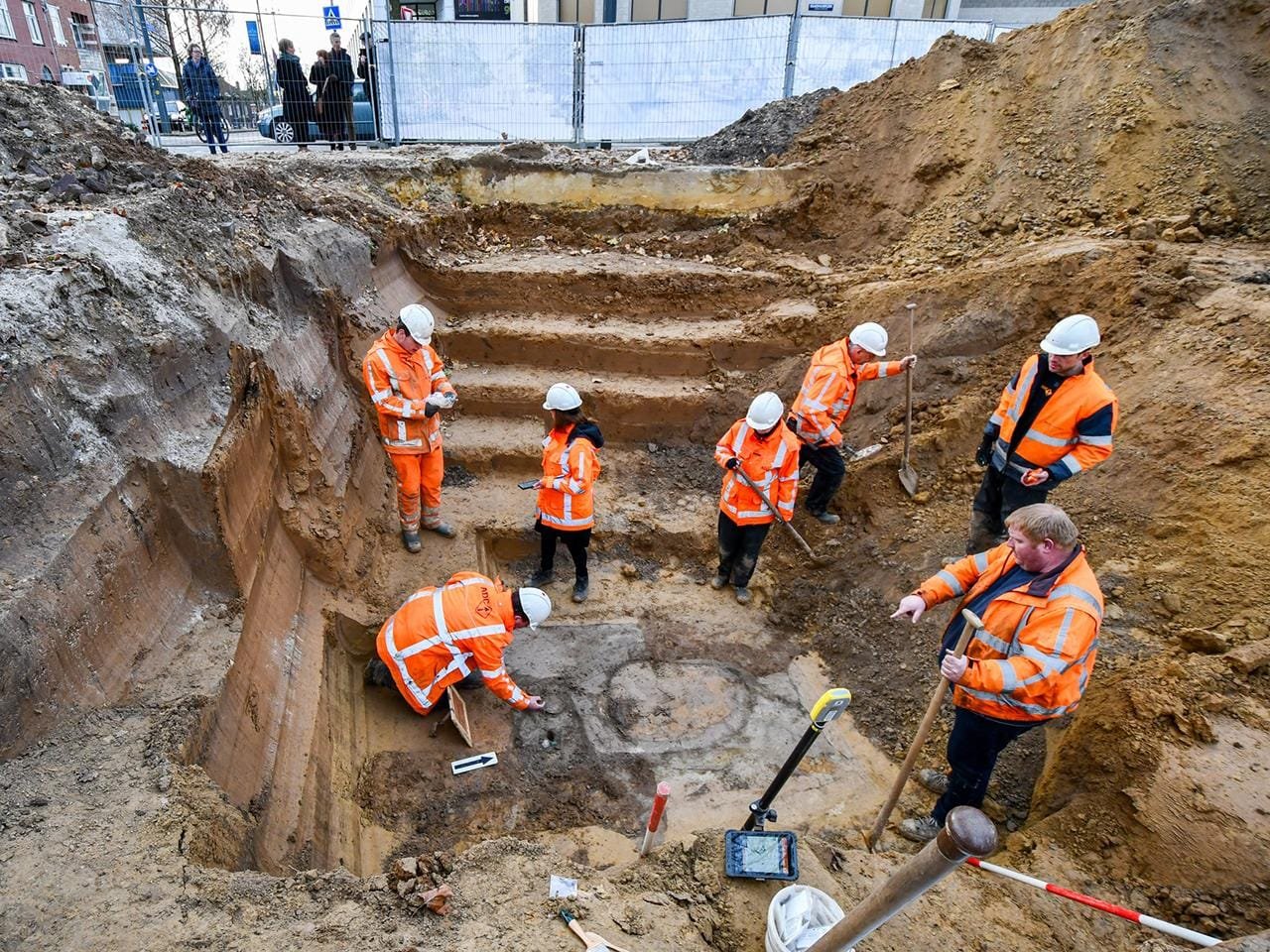Archaeologists have uncovered the earliest evidence of Roman settlement in Heerlen, Netherlands, with the discovery of a 2,000-year-old burial belonging to a Roman soldier named Flaccus.
 Excavation of the grave of Roman soldier Flaccus in Heerlen. Credit: Municipality of Heerlen
Excavation of the grave of Roman soldier Flaccus in Heerlen. Credit: Municipality of Heerlen
The find, made during ongoing excavations at the Raadhuisplein (Town Hall Square), offers new insights into Heerlen’s history as Coriovallum, a Roman settlement strategically located at the crossroads of major Roman roads.
The grave was identified in late November 2024 by archaeologists from ADC ArcheoProjecten during a redevelopment project at the Raadhuisplein. Initially thought to be a cellar pit due to its rectangular shape and soil discoloration, the pit’s purpose became clear with the discovery of cremation remains. Artifacts in the grave included a bronze strigil, pottery shards, and a set of terra sigillata plates. One of these plates bore the abbreviation “FLAC,” a nickname for Flaccus, carved into its surface.
Jordy Clemens, Heerlen’s councilmember for culture and heritage, said: “Today, evidence was found of Roman habitation in the time of Emperor Augustus. A unique discovery that not only teaches us more about our past, but also shows how unique the story of Roman Heerlen is for the Netherlands.”
The burial of Flaccus predates other known Roman graves in Heerlen and represents the oldest named individual in the city’s history. Previous finds, such as pottery fragments from the first half of the 1st century CE, were insufficient to confirm habitation, as they could have been lost or discarded along the road. Flaccus’ grave provides unequivocal evidence of early Roman presence.
The artifacts in the grave, including four matching plates and a personalized bowl, were made in Italy and date to around the year 0. These items suggest that Flaccus was a Roman soldier stationed at Coriovallum during the early Roman expansion into the region. The bronze strigil, used for personal hygiene, reflects the soldier’s daily life.
Archaeologists highlight the rarity of identifying non-elite individuals by name in ancient contexts, making Flaccus’ burial a significant discovery. The presence of the name on a funerary object indicates the personal and cultural practices of the time.
During the early 1st century CE, Coriovallum was established at the junction of the Via Belgica and Via Traiana, connecting Cologne (Germany) to Boulogne-sur-Mer (France) and Xanten (Germany) to Trèves (France). Initially a military settlement, Coriovallum evolved into a flourishing civilian town by the mid-1st century CE. Its public baths, built around 50-70 CE, remain the largest visible Roman ruins in the Netherlands.
Excavations at the Raadhuisplein will continue into December. The artifacts from Flaccus’ grave will be cleaned, conserved, and displayed at the new Roman Museum of Heerlen. Clemens noted: “This find not only teaches us more about our past but also demonstrates the unique story of Roman Heerlen for the Netherlands.”
More information: Municipality of Heerlen





